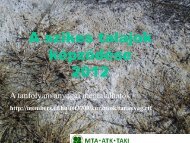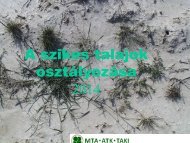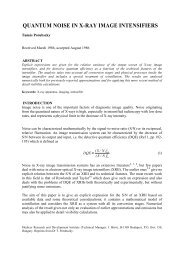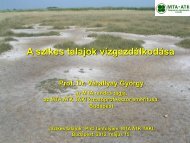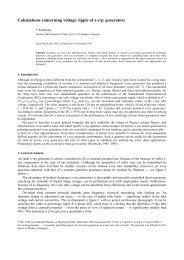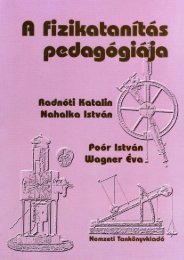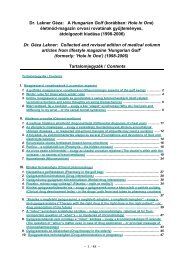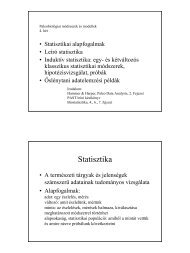Abstract form
Abstract form
Abstract form
Create successful ePaper yourself
Turn your PDF publications into a flip-book with our unique Google optimized e-Paper software.
Two transects along the inner and outer sides of a sixty years old Tisza<br />
River dike<br />
Tibor TÓTH* 1 , Roger LANGOHR 2 , Judit BECZE-DEÁK 3 , Zsolt MOLNÁR 4<br />
1 Research Institute for Soil Science and Agricultural Chemistry of the Hungarian<br />
Academy of Sciences, Budapest (Hungary)<br />
2 Laboratory of Soil Science, University of Ghent (Belgium)<br />
3 Service Cantonal d'Archéologie Neuchâtel (Switzerland)<br />
4 Ecological and Botanical Research Institute of the Hungarian Academy of Sciences,<br />
Vácrátót (Hungary)<br />
*Corresponding author’s e-mail: tibor@rissac.hu<br />
Two transects were studied with field pedological investigations and soil bulk electrical<br />
conductivity meter in order to understand the effect of a 60 year old dike on soil<br />
<strong>form</strong>ation and vegetation composition. The depth to groundwater followed the usual<br />
tendency: with decreasing elevation it became shallower. There was a difference in the<br />
groundwater depth: outside the dike it was deeper, its salinity smaller than inside the<br />
dike. The same tendency was observed for the standing water: it was diluter outside the<br />
dike than the river water. There were no great differences in the soil properties. Soil is<br />
more saline and wetter inside the dike and vegetation reflected this situation. The<br />
alluvial sediments seem to be non-calcareous, yet calcareous subsurface horizons have<br />
been observed in all the profiles. This calcareous material might be related with<br />
calcareous dust input. Along both transects a dark coloured, organic rich subsurface<br />
horizon has been observed. Soil characteristics (both morphological and field measured<br />
chemical) indicative of alkaline conditions have been observed in the transects. Perched<br />
rain water has been observed in all the profiles. Since the profiles were located in the<br />
highs the effect of recent sediment deposits was not dominating. Therefore the soils<br />
could be characterized as Meadow soils, except for the highest lying Solonetz soils in<br />
both transect. Previously the river was cutting deep into surface and there might have<br />
been opportunity to carry some of the salt load of the groundwater flowing into its bed.<br />
At present there is less and less chance for such transport, since the river bed is being<br />
filled up and less and less groundwater is getting into the bed. This phenomenon can<br />
give clue to the larger soil, groundwater and water salinity observed inside the dike than<br />
outside. Kuti, 1989 presented a hypothesis on the <strong>form</strong>ation of the salt-affected areas of<br />
Danube valley due to the groundwater traps. These traps are <strong>form</strong>ed under the effect of<br />
groundwater flowing from two directions: the river bed and the ridges. Similar<br />
mechanism can be responsible for the increased salinity inside the dike. We hypothesize<br />
that the increasing build up of the riverbed might contribute to the contrast in soil and<br />
groundwater salinity between the area inside and the area outside the dike, similarly as<br />
conceptualized by Kuti, 1989, but at a much finer spatial scale.<br />
Key words: salinization, groundwater, conceptual model<br />
42



